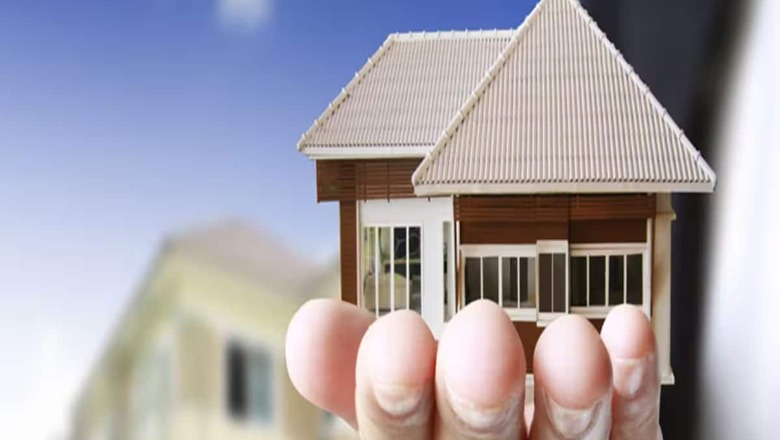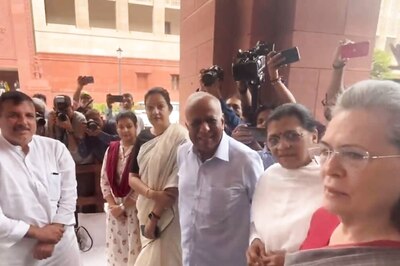
views
India has set an ambitious goal for itself – to become a developed nation by 2047, when the country will celebrate 100 years of independence. A crucial component of that goal is to provide housing to all Indians. Prime Minister Narendra Modi had said on Wednesday that while he does not have a house in his own name, his government has been able to help “lakhs of daughters” of the country become house owners.
On this front, the Modi government’s track record has been quite good as it has presided over the rollout of the massive PM Awas Yojana launched in 2015. The Centre is also doubling down on this effort by rolling out an interest subsidy scheme worth $7.2 billion soon. This could grant cheaper loans to nearly 25 lakh applicants in low-income groups in urban areas.
An Era of Mega Housing Schemes
While in Gujarat this week, this is what the prime minister said: “Today I am satisfied because my government has built four crore houses for people across the country. Unlike the past governments, a house for the poor is not just a number for us.”
- Data shows that until May 2023, the government had built a total of 3 crore houses under the PM Awas Yojana. So, PM Modi is indicating that another 1 crore houses are being/have been built since then. This is indicative of the size and scale of the mission to provide Indians with pucca houses.
- In July this year, Union Minister Hardeep Singh Puri revealed that under the PM Awas Yojana (Urban) alone, the Modi government had sanctioned 1.19 crore houses, out of which, 75 lakh houses had already been delivered to beneficiaries.
- The government had increased the budget outlay for the PM Awas Yojana by 66 per cent to over Rs 79,000 crore for the current fiscal year.
- In March, PM Mod had said that 20 million women have received ownership rights under the PM Awas Yojana. This shows women have been major beneficiaries of the housing scheme.
- A proposed home loan subsidy scheme will also benefit lower groups immensely. According to Reuters, an annual interest subsidy between 3-6.5 per cent on up to Rs 9 lakh of the loan amount may be provided under the new scheme. This subsidy may be available on home loans below Rs 50 lakh, availed for a tenure of 20 years.
- The interest subvention will be credited upfront to the housing loan account of beneficiaries. Essentially, the government is going to make home loans cheaper for lower-income groups, in order to incentivise them to buy or construct houses.
Housing With Dignity
The job is not done. The initiatives to provide houses to Indians who need them the most cannot be seen in isolation. They must be seen in tandem with other government initiatives which have helped improve the overall quality of life for crores of ordinary Indians. For example,
- Jal Jeevan and Har Ghar Jal Missions are helping provide safe, clean water to all households.
- Swachh Bharat Abhiyaan, under which crores of toilets have been built across India, has helped increase sanitation coverage.
- Ujjwala Yojana is providing families with LPG connections & Saubhagya scheme is helping achieve household electrification.
- The home loan interest subsidy scheme will inevitably be linked to the Jan Dhan Yojana, which has played a critical role in the financial inclusion of Indians, especially in rural India.
After all, Prime Minister Modi has been keen to emphasise, “We work towards providing dignity to the poor by building a house for him.” While housing for all is indeed an important campaign, it goes hand in hand with a host of other initiatives.
India’s Next Housing Boom?
Meanwhile, it is to be noted that there is also a growing organic demand for homes in Indian cities. Home sales in the top seven cities of India reached an all-time high of 120,280 units between July and September, according to real estate consultancy Anarock Research. Compared to 88,230 units sold during the same months in 2022, sales this year were 36 per cent higher. Average home prices in the top seven cities also saw double-digit growth of 11 per cent compared to the same quarter last year.
The healthy sales momentum is partially attributable to the repo rate pause maintained by RBI, which has kept home loan interest rates stable and housing purchase sentiment high. The mid-range segment (homes priced between Rs 40–80 lakh) continues to dominate in sales, and this means that once the proposed home loan interest subsidy is announced, a major chunk of home buyers in this segment will benefit.
Urban housing for low-income groups remains a matter of concern. Many live in chawls or slums, and that does not auger well for a country looking at the developed nation tag for itself in the next 20 years. This is why providing citizens with houses figures prominently in the Modi government’s plan. When people get homes with all the necessary amenities, the overall standard of living rises. This is key to India scoring better on the Human Development Index. This would be at the core of the human-centric development plan that Prime Minister Modi has been emphasising on.
Views expressed in the above piece are personal and solely that of the author. They do not necessarily reflect News18’s views.



















Comments
0 comment